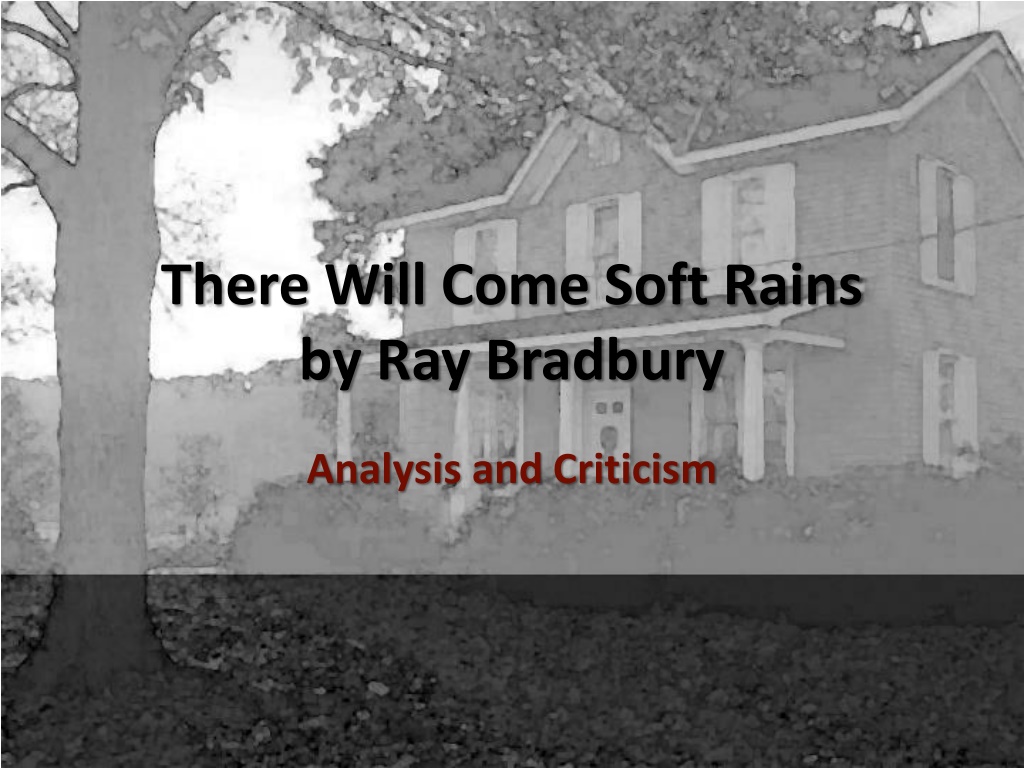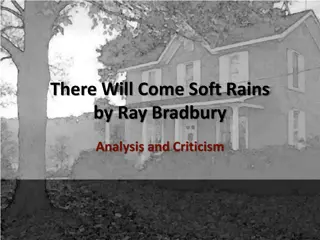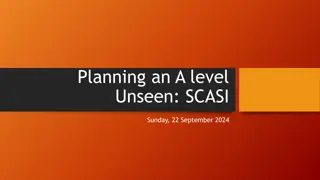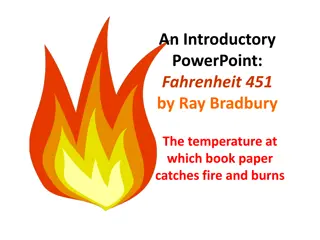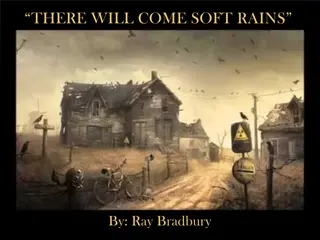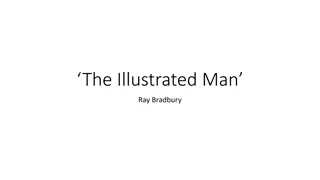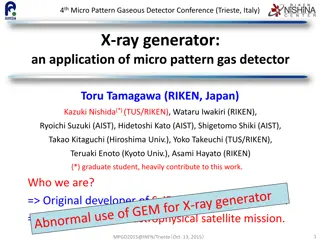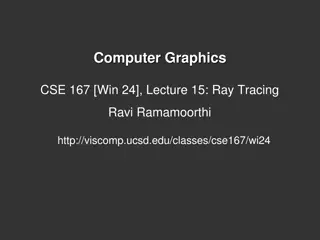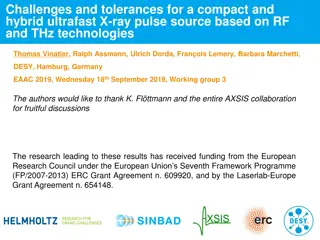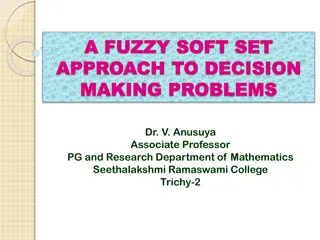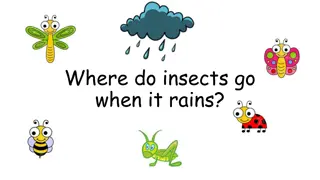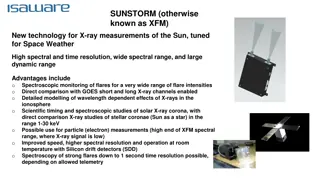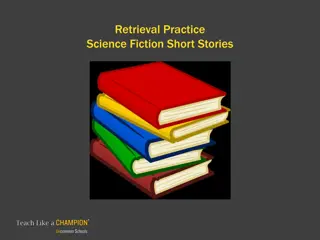Analysis of "There Will Come Soft Rains" by Ray Bradbury
In Ray Bradbury's "There Will Come Soft Rains," the story is set in a fully automated house after humanity has been wiped out. The absence of human characters is compensated by the depiction of the house as a character itself through personification. As the story unfolds, the house's attempt to maintain normalcy in the face of its own destruction creates a haunting and melancholic atmosphere. The use of personification adds depth to the setting, particularly during the intense scene when the house succumbs to flames. Through vivid imagery and symbolism, Bradbury explores themes of technology, nature, and the fragility of human existence.
Download Presentation

Please find below an Image/Link to download the presentation.
The content on the website is provided AS IS for your information and personal use only. It may not be sold, licensed, or shared on other websites without obtaining consent from the author. Download presentation by click this link. If you encounter any issues during the download, it is possible that the publisher has removed the file from their server.
E N D
Presentation Transcript
There Will Come Soft Rains by Ray Bradbury Analysis and Criticism
Writers Notebook Read the following statements and choose the one that you agree with the most. Then, write a few sentences explaining/supporting your choice. Technology will be the salvation of humankind. Technology will be the destruction of humankind.
Technology There Will Come Soft Rains by Sara Teasdale (1920) Teasdale Poem Was written in the aftermath of World War I. How does the poet imagine nature would respond to the eradication of mankind? Why do you think Bradbury chose this poem as a basis for his short story?
Characters Bradbury s story is unusual in that it contains no living human characters at all. This means we must look elsewhere when talking about characters.
Dog House Fire CHARACTERS Absent Humans Robots
Characters Bradbury uses non-human and inanimate characters in his story. He does this by using personification to bring the inanimate objects to life. Personification: A type of figurative language in which a nonhuman subject is given human characteristics
Personification The house seeks to protect itself from intruders. It has an old-maidenly preoccupation with self- protection which borders on a mechanical paranoia. The house is obsessed with keeping itself clean.
Personification The story ends with intense imagery of the house being burned alive, exposing mechanical capillaries, ligaments, and bones. It screams like children dying in a forest, alone, creating a sense of helplessness. Choruses of malfunctioning objects sing out, oblivious to their impending destruction Above the roaring fire, one voice reads poetry with sublime disregard for the situation Another voice continues to say the time and date, even though the house has been utterly decimated
Personification Why does Bradbury use so much personification in this story? What effect does this have on the setting, especially during the scene where the house catches on fire?
Personification By giving the fire and the house human characteristics, the author emphasizes the absence of human beings. The personification also has the effect of creating a battle between two living beings. (Conflict) The personification also shows that the automated setting is not as perfect as its creators might have thought. (Theme)
Why arent there any humans? There are no humans present in the story, only traces, shadows, echoes. Bradbury explores an ironic reflection on the strengths and weaknesses of human nature, while warning against the limits and dangers of technology. Irony: the reversal of expectations The same advancements that enable the people of the future to create this fully automated house are also responsible for the creation of the nuclear weapons that lead to their destruction.
Irony Irony is defined as the effect created when a writer contrasts expectations and reality. Situational irony: an event directly contradicts strong expectations
Irony Time The house has been programmed to run on a tight schedule, which it follows religiously even after the humans are gone.
Irony Shadows The west side of the house is charred completely except for five nuclear shadows, or silhouettes left by the family members as they died in the sudden, instantaneous explosion Contrary to the nature of their death, the shadows seem peaceful, like a picture: the children are playing ball, the husband is mowing the lawn, the wife is picking flowers What effect does this depiction have on the mood of the story?
Irony The Poem Mrs. McClellan, the former owner of this highly advanced home, had programmed the house to read her favorite poem about the destruction of humanity by the hands of technology and how little nature will care once mankind has perished It is also ironic that the poet seems to suggest that nature will benefit from mankind s destruction, that in the wake of our extinction nature will be restored to a state of peace (a rebirth)
Conflict-Man vs. Machine Man vs. Machine Even though the tragedy of the story has already taken place by the time the story begins, it is the conflict between human beings and the machines (technology) they have created that is at the heart of the story. House is preoccupied with keeping time, a human construct; despite the absence of any humans, the house continues to be concerned with celebrations of time (birthdays, anniversaries) and timely reminders (the insurance, water, gas, and light bills)
Conflict Man vs. Machine The house does not possess any sort of artificial intelligence it does not pause to wonder why no one is eating the food it has prepared or listening to it as it reads poetry aloud or enjoying the services it loyally provides. The house has no concept of death, even as it s being destroyed.
Conflict-Machine vs. Nature Machine vs. Nature Despite the absence of humanity, natural cycles continue in the story (weather, the sun emerges after the rain) The effect of the neglected technology is still present in nature the house stands alone in a scorched land, surrounded by ruins, remnants of other buildings and homes At night, the ruined city gave off a radioactive glow which could be seen for miles.
Conflict Machine vs. Nature Animals exist without humanity, but in poor conditions The foxes, cats, and sparrows search for food and shelter from the home; the family dog dies from radiation poisoning and starvation House functions performed by mechanical animals (mice, rats, snakes) The children s bedroom features an artificial jungle with mechanical animals and synthetic environments
Conflict Machine vs. Nature In the end, nature prevails over technology A tree falls on the house, causing the fire Fire is a basic, natural force and a symbol of true destructive power
Themes People put too much faith in their technological creations. People have the power to create devices that can help them and also those that can destroy them; however, there is no evidence to suggest that mankind enacted any measures to prevent their destruction. Dual nature of technology: it can both help and harm us, impossible to progress in one aspect without the other.
